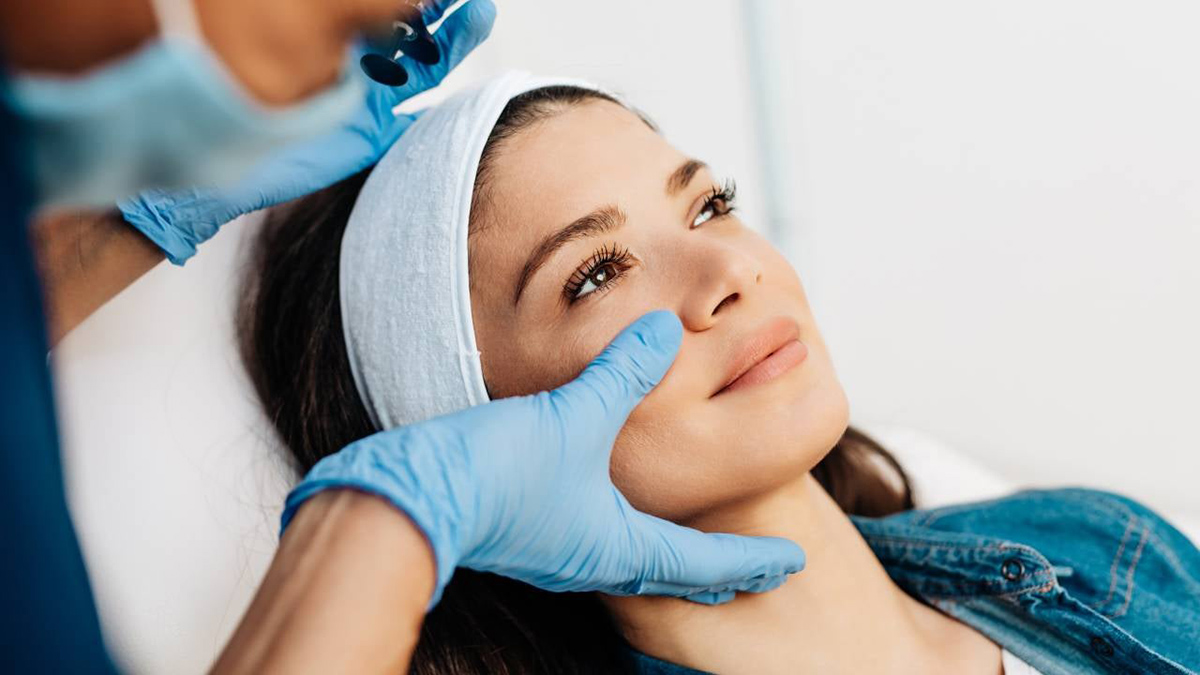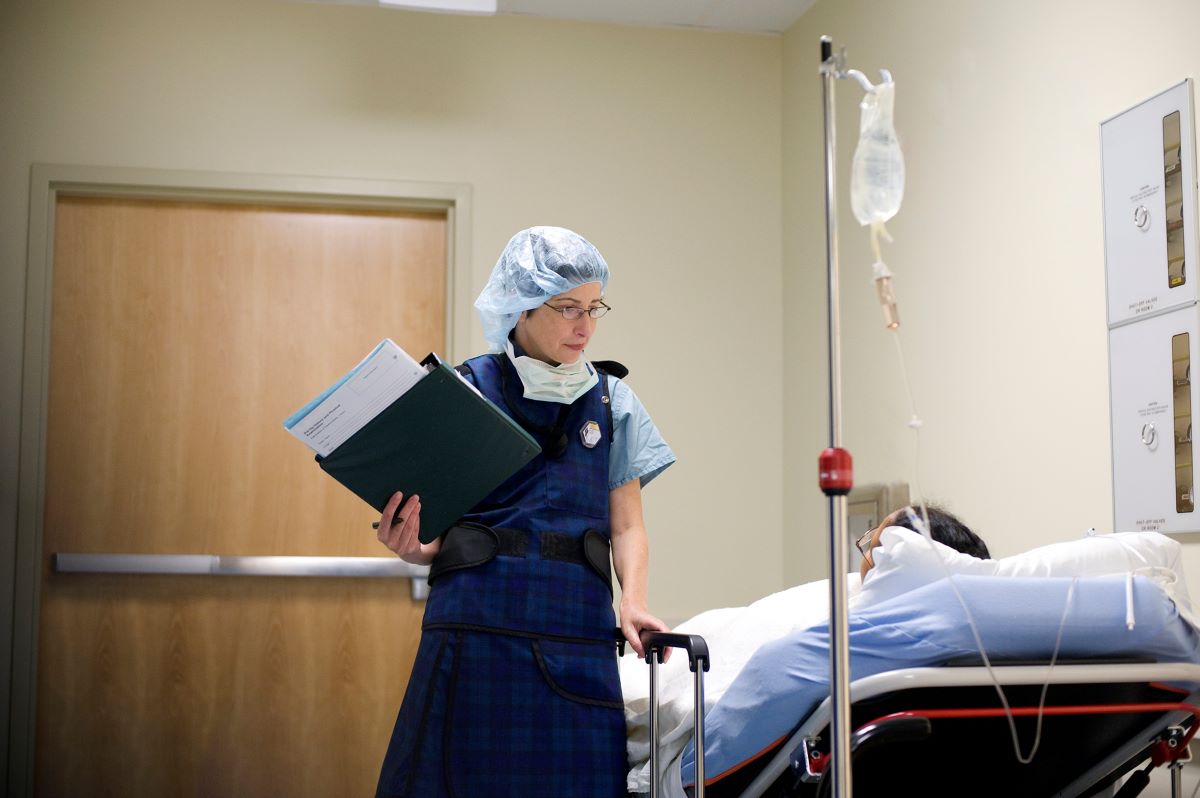Home>Finance>How To Get Insurance To Pay For Plastic Surgery


Finance
How To Get Insurance To Pay For Plastic Surgery
Published: November 18, 2023
Learn how to finance your plastic surgery and get insurance to pay for it. Explore different options and maximize your coverage.
(Many of the links in this article redirect to a specific reviewed product. Your purchase of these products through affiliate links helps to generate commission for LiveWell, at no extra cost. Learn more)
Table of Contents
- Introduction
- Understanding Insurance Coverage for Plastic Surgery
- Step 1: Determining if Your Plastic Surgery is Medically Necessary
- Step 2: Reviewing Your Insurance Policy
- Step 3: Gathering Necessary Documentation
- Step 4: Pre-authorization and Pre-certification Process
- Step 5: Appealing a Denied Claim
- Step 6: Utilizing Financial Assistance Options
- Step 7: Working with a Plastic Surgeon Experienced in Insurance Claims
- Conclusion
Introduction
Plastic surgery has become increasingly popular for individuals looking to enhance their appearance or correct physical imperfections. However, the cost of these procedures can be quite expensive, making it difficult for many people to afford them out of pocket. That’s where insurance coverage for plastic surgery comes into play.
While most insurance policies do not cover elective cosmetic procedures, there are instances where insurance companies may provide coverage for medically necessary plastic surgery. Understanding how to navigate the insurance claims process and maximize your chances of getting coverage is crucial.
In this article, we’ll guide you through the steps to increase the likelihood of your insurance company paying for your plastic surgery. From determining medical necessity to appealing denied claims, we’ll provide you with the knowledge and tools needed to successfully navigate the insurance landscape.
Before delving into the specifics, it’s important to note that every insurance policy is different. The coverage and criteria for plastic surgery may vary widely depending on your insurance provider, so it’s essential to review your policy and consult with your insurance company directly for accurate and personalized information.
Now, let’s explore the steps to maximize your chances of getting insurance coverage for plastic surgery.
Understanding Insurance Coverage for Plastic Surgery
Insurance coverage for plastic surgery can be complex and varied. To increase your chances of getting insurance to pay for your procedure, it is important to understand the key factors that influence coverage.
The first consideration is whether the plastic surgery is deemed medically necessary. Insurance companies typically only cover procedures that are required to treat a specific medical condition or to improve function. Examples of medically necessary plastic surgeries may include reconstructive procedures after a traumatic injury or surgery to correct a congenital abnormality that affects a person’s quality of life.
On the other hand, purely cosmetic or elective procedures that are done solely for aesthetic reasons, such as breast augmentation or nose reshaping, are typically not covered by insurance.
Secondly, insurance coverage for plastic surgery is also dependent on the specific terms and conditions of your policy. Some insurance plans may have exclusions for certain procedures or limitations on the amount they will reimburse. It’s crucial to carefully review your policy to understand the coverage and any restrictions or requirements that may apply to plastic surgery.
Additionally, insurance providers may have specific criteria and documentation requirements that need to be met before they will consider coverage for plastic surgery. This often involves obtaining pre-authorization or pre-certification from the insurance company, which confirms that the procedure is medically necessary and meets their guidelines.
It’s important to note that even if you meet the criteria for medical necessity and your insurance plan covers the procedure, this does not guarantee full reimbursement. Deductibles, co-pays, and out-of-pocket expenses may still apply, so it’s essential to understand your financial obligations before proceeding with the surgery.
Overall, it is crucial to thoroughly research and understand your insurance coverage for plastic surgery. By being well-informed and proactive, you can ensure that you are prepared to navigate the insurance claims process and maximize your chances of getting coverage for your procedure.
Step 1: Determining if Your Plastic Surgery is Medically Necessary
Before pursuing insurance coverage for your plastic surgery, you need to determine whether your procedure is considered medically necessary. Insurance companies typically only cover procedures that are deemed necessary to treat a specific medical condition or to improve function.
Here are some factors to consider when determining if your plastic surgery is medically necessary:
- Existence of a medical condition: Is there an underlying medical condition or physical abnormality that affects your health or quality of life? Examples include reconstructive surgery after a severe burn or injury, breast reduction surgery for chronic back pain, or eyelid surgery to improve vision impaired by drooping eyelids.
- Impact on physical function: Does the condition or physical abnormality impair your ability to perform daily activities or affect your overall well-being? If your condition hinders your mobility, causes chronic pain, or affects your self-esteem to the extent that it affects your mental health, it may be considered medically necessary.
- Conservative treatment options: Have you explored and exhausted alternative, non-surgical treatment options? Insurance companies generally require that patients have tried non-invasive or less invasive treatments before considering plastic surgery. Documenting your previous treatments and their lack of success can strengthen your case for medical necessity.
- Expert opinion: Consult with your primary care physician or a specialist in the field to assess whether they consider the proposed surgery medically necessary. They can provide the medical documentation and support needed for your insurance claim.
It’s important to note that insurance companies have their own guidelines for determining medical necessity, and each case is evaluated individually. The decision may depend on the specific policy and the evidence provided to support your claim.
Before proceeding with your surgery, contact your insurance provider to discuss your specific situation and ensure that you meet their criteria for medical necessity. Obtaining pre-authorization or pre-certification is a crucial step in the insurance claims process and can save you from potential denials and complications later on.
By determining if your plastic surgery is medically necessary, you can lay the foundation for a successful insurance claim and increase your chances of getting coverage for your procedure.
Step 2: Reviewing Your Insurance Policy
Once you have determined that your plastic surgery may be medically necessary, the next step is to thoroughly review your insurance policy. Understanding the coverage and limitations in your policy is crucial to navigate the insurance claims process effectively.
Here are some key considerations when reviewing your insurance policy:
- Exclusions and limitations: Take note of any specific exclusions or limitations regarding plastic surgery. Some policies may explicitly state that cosmetic procedures are not covered, while others may have restrictions on certain types of procedures or specific conditions that need to be met for coverage.
- Network providers: Check if your insurance plan requires you to use healthcare providers within a specific network. If so, you will need to ensure that your chosen plastic surgeon is in-network to maximize your insurance benefits. Going out-of-network may result in higher out-of-pocket expenses or decreased coverage.
- Deductibles and co-pays: Familiarize yourself with the deductible amount and co-payments associated with your insurance policy. These are the costs you will be responsible for before your insurance coverage kicks in. Understanding your financial obligations will help you plan for the out-of-pocket expenses associated with the surgery.
- Coverage limits: Determine if your policy has any coverage limits or maximums for plastic surgery procedures. Some insurance plans may set a cap on the amount they will reimburse for a specific procedure or have a lifetime coverage limit for all plastic surgery-related claims. Knowing these limits will let you manage your expectations and plan accordingly.
- Documentation requirements: Carefully review the documentation needed to support your insurance claim. Insurance companies often require medical records, letters of medical necessity, photographs, and other supporting documents. Familiarize yourself with these requirements to ensure you have all the necessary documentation for your claim.
If you have any questions or need clarification about your policy’s coverage for plastic surgery, reach out to your insurance provider directly. They can provide you with the most accurate and up-to-date information based on your specific policy.
By thoroughly reviewing your insurance policy, you will have a clear understanding of what is covered, any limitations or requirements, and what you can expect in terms of cost and reimbursement. This knowledge will help you navigate the insurance process more confidently and make informed decisions about your plastic surgery.
Step 3: Gathering Necessary Documentation
When seeking insurance coverage for your plastic surgery, gathering the necessary documentation is essential to support your claim and increase your chances of approval. Insurance companies typically require specific documentation to verify the medical necessity of the procedure. Here are some key documents you may need to gather:
- Medical records: Provide your insurance company with comprehensive medical records related to the specific condition you are seeking to address with the plastic surgery. These records should include diagnoses, symptoms, previous treatments, and any other relevant medical history.
- Letters of medical necessity: A letter from your primary care physician or specialist supporting the medical necessity of the surgery can strengthen your case. The letter should outline the specific condition, explain how the surgery will improve your health or functional abilities, and provide any relevant research or literature supporting the treatment approach.
- Photographs and imaging results: Include clear photographs and imaging results that illustrate the condition you are seeking to treat. This visual evidence can help insurance reviewers understand the extent and impact of the condition and may be critical in demonstrating medical necessity.
- Treatment plans and reports: If you have undergone previous treatments or consultations, include any treatment plans, reports, or notes from healthcare professionals as part of your documentation. This demonstrates that you have explored alternative treatment options before pursuing surgery.
- Consent forms and financial agreements: Keep copies of any consent forms or financial agreements related to the plastic surgery. These documents may be required by your insurance company to confirm that you have made an informed decision about the procedure and understand your financial responsibilities.
It’s important to ensure that all documentation is complete, organized, and accurately reflects your specific medical situation. Provide clear and concise information that highlights the medical necessity of the plastic surgery. The more comprehensive and well-documented your submission, the stronger your case for insurance coverage.
Before submitting your claim, double-check the documentation requirements outlined by your insurance provider. Make sure you have met all the necessary criteria and included any additional documents they may require.
It can also be helpful to keep copies of all submitted documentation for your own records. This will allow you to easily reference and provide additional information if requested or if you need to appeal a denied claim in the future.
By gathering the necessary documentation and presenting a well-supported case, you increase your chances of obtaining insurance coverage for your plastic surgery.
Step 4: Pre-authorization and Pre-certification Process
Obtaining pre-authorization or pre-certification from your insurance company is a crucial step in the insurance claims process for plastic surgery. This process confirms that the procedure is medically necessary and meets your insurance provider’s guidelines. Here’s what you need to know:
- Check your insurance policy: Review your insurance policy to determine if pre-authorization or pre-certification is required for the specific plastic surgery procedure you plan to undergo. Some insurance plans may have different requirements based on the type of surgery.
- Contact your insurance provider: Reach out to your insurance company to inquire about their specific pre-authorization or pre-certification process. They will provide you with the necessary forms and guide you through the steps to initiate the review process.
- Submit the required documentation: Prepare and submit all the required documentation to support your claim for pre-authorization. This typically includes medical records, letters of medical necessity, photographs, imaging results, and any other supporting documents outlined by your insurance provider.
- Follow up with your insurance provider: Stay in touch with your insurance company to ensure that your pre-authorization request is being processed and that all necessary information has been received. Be prepared to provide any additional documentation or answer any inquiries promptly.
- Confirmation of pre-authorization: Once your insurance provider reviews your claim and determines that the plastic surgery is medically necessary, you will receive a formal confirmation of pre-authorization. This document verifies that your insurance company will cover the procedure, subject to any applicable deductibles, co-pays, and coverage limits.
- Keep copies of the approval documentation: Maintain copies of the pre-authorization confirmation and any related correspondence from your insurance provider for your records. These documents serve as proof of approval and will be useful during the claims process and billing.
It’s important to note that pre-authorization or pre-certification does not guarantee full coverage or reimbursement. Deductibles, co-pays, and coverage limits may still apply, so it’s crucial to fully understand your financial responsibilities and any potential out-of-pocket costs associated with the procedure.
By completing the pre-authorization or pre-certification process, you can ensure that your plastic surgery claim is reviewed by your insurance company and increases the likelihood of obtaining coverage for your procedure.
Step 5: Appealing a Denied Claim
If your insurance company denies your claim for coverage of plastic surgery, don’t lose hope. You have the right to appeal their decision and present additional information or arguments to support your case. Here’s what you need to do:
- Review the denial letter: Carefully review the denial letter from your insurance company to understand the reasons for the denial. Pay attention to any specific requirements or missing information that may have influenced their decision.
- Understand the appeals process: Familiarize yourself with your insurance company’s procedures for appeals. They will have specific guidelines on how to submit an appeal, including deadlines and required documentation.
- Gather supporting evidence: Collect any additional documentation, medical records, test results, or expert opinions that may strengthen your case. This could include a more detailed explanation of medical necessity, evidence of unsuccessful conservative treatments, or new information that supports the benefit of the proposed surgery.
- Write an appeal letter: Compose a detailed and persuasive appeal letter addressing each point of denial outlined in the insurance company’s letter. Clearly state the reasons why you believe the plastic surgery should be covered, providing strong evidence and citing relevant research or medical guidelines.
- Submit the appeal: Send your appeal letter and supporting documentation to the designated address specified by your insurance company. Make sure to follow their guidelines regarding submission methods and any additional forms that may be required.
- Follow up with your insurance provider: Keep track of when you submitted your appeal and follow up with your insurance provider to ensure that it is being processed. Maintain open lines of communication and be prepared to provide any additional information they may request.
- Consider seeking assistance: If you find the appeals process overwhelming or if your initial appeal is denied, you may want to consult with a healthcare advocate or legal expert who specializes in insurance appeals. They can provide guidance and support you in presenting a strong case.
During the appeals process, it’s important to remain persistent and advocate for yourself. Be proactive in gathering evidence, demonstrating medical necessity, and presenting a compelling argument. Understand that the appeals process may take time, so it’s crucial to be patient while awaiting a resolution.
Remember, each insurance company has its internal appeals process, so carefully follow their guidelines and deadlines. If your appeal is denied again, you may have the option to pursue external avenues such as filing a complaint with your state’s insurance department or seeking legal advice.
By taking the necessary steps to appeal a denied claim, you increase your chances of obtaining the insurance coverage you deserve for your plastic surgery.
Step 6: Utilizing Financial Assistance Options
If insurance coverage for your plastic surgery is not available or insufficient, there are alternative financial assistance options that can help make the procedure more affordable. Here are some strategies to consider:
- Medical financing: Many healthcare providers offer financing options specifically designed for medical procedures. These financing programs allow you to pay for the surgery over time with manageable monthly payments. Research different medical financing companies, compare interest rates and repayment terms, and choose the option that best suits your needs.
- Savings and Budgeting: Start saving well in advance of your planned surgery. Allocate a portion of your monthly income towards a dedicated savings account to cover the costs of the procedure. Consider cutting back on unnecessary expenses and finding creative ways to save money to reach your financial goal.
- Crowdfunding: Utilize crowdfunding platforms to raise funds for your plastic surgery. Create a compelling campaign that explains your situation, the importance of the procedure, and how it will positively impact your life. Share your campaign with friends, family, and social networks, and encourage them to contribute and share your story.
- Non-profit organizations: Some non-profit organizations provide financial assistance specifically for medical procedures. Research local and national organizations that may offer grants or scholarships for plastic surgery, especially for medically necessary procedures or cases involving significant physical or psychological impact.
- Flexible spending accounts (FSAs) or health savings accounts (HSAs): Check if you have an FSA or HSA through your employer. These accounts allow you to set aside pre-tax funds for medical expenses, including eligible plastic surgery procedures. Consult with your employer or benefits administrator to understand the rules and restrictions regarding the use of these accounts.
- Charitable foundations: Some charitable foundations offer financial assistance for individuals seeking plastic surgery for specific medical conditions. Research foundations dedicated to supporting patients in need of reconstructive surgery or other related procedures and inquire about their application process and eligibility criteria.
Remember, when exploring financial assistance options, carefully consider the terms, interest rates, and repayment plans to ensure they are feasible for your situation. It’s also essential to be transparent with your healthcare provider about your financial constraints to explore possible discounts or payment plans they may offer.
Combining multiple financial assistance options, such as using medical financing in conjunction with savings or crowdfunding, may further alleviate the financial burden of your plastic surgery.
By utilizing these financial assistance options, you can make the cost of your plastic surgery more manageable and attainable, even without complete insurance coverage.
Step 7: Working with a Plastic Surgeon Experienced in Insurance Claims
When seeking insurance coverage for your plastic surgery, it can be beneficial to work with a plastic surgeon who has experience in handling insurance claims. Choosing a surgeon who understands the complexities of the insurance process can greatly increase your chances of a successful claim. Here’s why it’s important:
Knowledge of insurance requirements: Plastic surgeons experienced in insurance claims are familiar with the specific documentation and criteria required by different insurance companies. They can guide you in gathering the necessary medical records, letters of medical necessity, and supporting documentation to support your claim.
Communication with insurance companies: An experienced surgeon can effectively communicate with your insurance company on your behalf. They can clarify any medical or procedural details, provide additional information as needed, and advocate for the medical necessity of the procedure.
Documentation and coding expertise: Plastic surgeons skilled in insurance claims understand the importance of properly documenting your case and using accurate medical coding. They can ensure that all necessary information is included in your medical records and that the procedure is coded appropriately, optimizing the chances of successful coverage.
Maximizing insurance benefits: A surgeon experienced in insurance claims can help you make the most of your insurance benefits. They can determine the most effective approach to present your case, ensure that you comply with any pre-authorization or pre-certification requirements, and guide you on navigating any potential coverage limitations or restrictions in your policy.
Appealing denied claims: In the unfortunate event that your claim is denied, a knowledgeable surgeon can assist you in the appeals process. They can help you strengthen your case by providing additional supporting evidence, challenging the reasons for denial, and working with you to craft a persuasive appeal letter.
When selecting a plastic surgeon, inquire about their experience in dealing with insurance claims and their success rate in obtaining coverage for their patients. Ask for testimonials or references from previous patients who have successfully navigated the insurance process with their assistance.
Collaborating with a plastic surgeon experienced in insurance claims can significantly ease the burden of handling the insurance aspect of your plastic surgery journey. Their expertise and guidance can streamline the process and increase your chances of obtaining the insurance coverage you need.
Conclusion
Navigating the world of insurance coverage for plastic surgery can be complex and daunting. However, by following the steps outlined in this guide, you can maximize your chances of getting insurance to pay for your procedure.
First and foremost, it is crucial to determine if your plastic surgery is medically necessary. Understanding your insurance policy’s coverage and limitations is the next step. Gathering the necessary documentation, such as medical records and letters of medical necessity, is essential to support your claim.
When seeking insurance coverage, be sure to go through the pre-authorization and pre-certification process. If your claim is denied, don’t give up. You have the right to appeal the decision and present additional evidence to support your case.
If insurance coverage is not available or insufficient, explore other financial assistance options. Medical financing, savings, crowdfunding, and non-profit organizations can help make the cost of the procedure more manageable.
Working with a plastic surgeon experienced in insurance claims is highly advantageous. They can guide you through the process, communicate with your insurance company, and optimize your chances of success.
In conclusion, navigating insurance coverage for plastic surgery requires patience, perseverance, and knowledge. By understanding the criteria for medical necessity, thoroughly reviewing your insurance policy, gathering necessary documentation, going through the pre-authorization process, appealing denials, and exploring financial assistance options, you can increase your likelihood of obtaining the coverage you need for your plastic surgery.
Remember, every insurance policy and situation is unique, so it is crucial to consult with your insurance provider and plastic surgeon to obtain personalized advice and information. Armed with the right knowledge and resources, you can make informed decisions about your plastic surgery and work towards achieving your desired outcomes.














